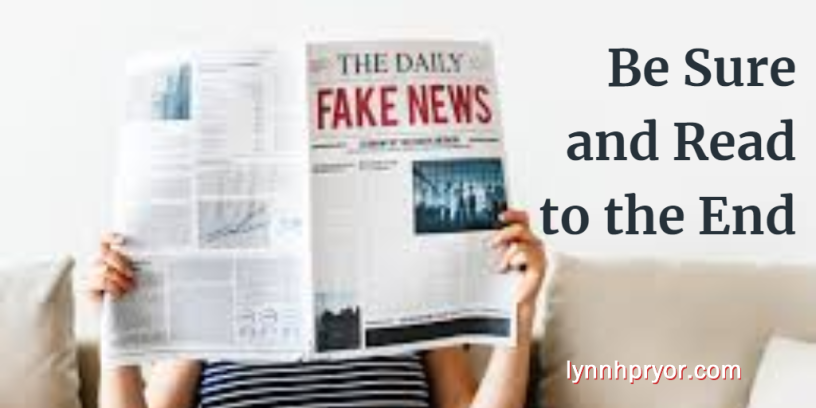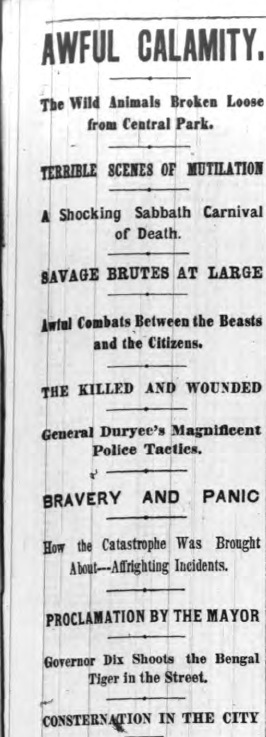Be Sure and Read to the End

 It was a horrific day in New York City. On November 9, 1874, multiple animals escaped from the Central Park Zoo. The New York Herald reported that the animals were running rampant in the city. A lion was even found inside a church. Forty-nine people died and over 200 were injured as the NYPD tried to corral the animals. Even the National Guard was called in.
It was a horrific day in New York City. On November 9, 1874, multiple animals escaped from the Central Park Zoo. The New York Herald reported that the animals were running rampant in the city. A lion was even found inside a church. Forty-nine people died and over 200 were injured as the NYPD tried to corral the animals. Even the National Guard was called in.
Upon seeing the article, human nature kicked in for many New Yorkers—and they panicked. And why not panic? They had just read in New York’s most respected and esteemed newspaper that animals and mayhem were ruling the streets.
One problem: these panicky people who claimed to read it in the paper didn’t read the full news story. The article ended with this:
“Of course the entire story given above is a pure fabrication. Not one word of it is true. Not a single act or incident described has taken place. It is a huge hoax, a wild romance, or whatever other epithet of utter untrustworthiness our readers may choose to apply to it. It is simply a fancy picture which crowded upon the mind of the writer a few days ago while he was gazing through the iron bars of the cages of the wild animals in the menagerie at Central Park.”
Hoo boy, a few New Yorkers were mad to be taken in by this. Thomas Connery, the editor who made this story up did so with the intention of drawing attention to the less-than-stellar condition of the zoo. (If you want to read the full text of the newspaper article, click here.) What Connery ultimately drew attention to was our tendency to react without all the facts … to think we see the big picture because we see part of it … to see what we want to see.
When I first learned of this fantastic hoax, I immediately thought of our current culture of slanted news and fake news.
- Writers interpret events from their own perspective and biases.
- Readers interpret what they read from the vantage point of their own perspective and biases.
We applaud that which supports our views and vilify as fake news anything that does not support our view. We read what we want to in the article. To be clear, none of us can read or watch the news apart from our own thoughts and opinions. We just need to ensure our emotions and biases are not steering the ship.
In other words, have you “read to the end of the article” to see the big pictutre? We live in a world of soundbites and headlines, and we react to the surface-level news without an in-depth analysis. But if we take the time to dig and learn for ourselves—without simply taking at face value what the news pundits and talk show hosts tell us—we come away better informed.
It’s OK to fact-check the “experts.” When the apostle Paul had a stopover in Berea and shared the gospel, they liked what they heard but they didn’t accept it at face-value. They fact-checked Paul.
“The people here were of more noble character than those in Thessalonica, since they received the word with eagerness and examined the Scriptures daily to see if these things were so” (Acts 17:11).
They were called noble for making sure they got the facts straight. This is a worthy thing to do with any preacher who shows up—and it is a worthy thing to do when it comes to politics and running our country.
Related post: The Lure of Fake News
Subscribe to this blog or like our Facebook page. And share this post with others.











